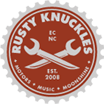 |
| Hard to believe, but in reality its 100% true, a song was etched into wood for a recording |
Link over to Core77 for the article
"We were pretty impressed with Amanda Ghassaei's 3D-printed records, but apparently the Tech Editor at Instructables isn't content to blow our minds with her digital fabrication prowess just once. As of this weekend, she's back with a veritable encore: a Laser Cut Record.
Although all the documentation for that project is available here, and the 3D models can be printed through an online fabrication service, I felt like the barrier to entry was still way too high. With this project I wanted to try to extend the idea of digitally fabricated records to use relatively common and affordable machines and materials so that (hopefully) more people can participate and actually find some value in all this documentation I've been writing.
As with the 3D-printed vinyl, the laser cut record is hardly high-fidelity... but that's not the point. The point is, it's really f'in cool.
 |
| Amazingly the laser etched into the wood in a great way |
The process, which Ghassaei duly explains to a high degree of technical detail on Instructables, also works for acrylic, pictured above. Here's "Femme Fatale" in maple, as promised; more videos are available on Ghassaei's video page.
Naturally, I'm curious as to whether it would be possible to combine—or "mash-up," as they say—Ghassaei's digi-fab wizardry with, say, Bartholomaus Träubeck's rather more conceptual wooden record. While we're at it, maybe Richard Dahlstrand can come up with a way to take it to the next level: I'm picturing a RepRap record player, hacked beyond recognition into some kind of simultaneous fabrication and playback device...
 |
| The laser created a really cool burn pattern that actually plays the song |











































